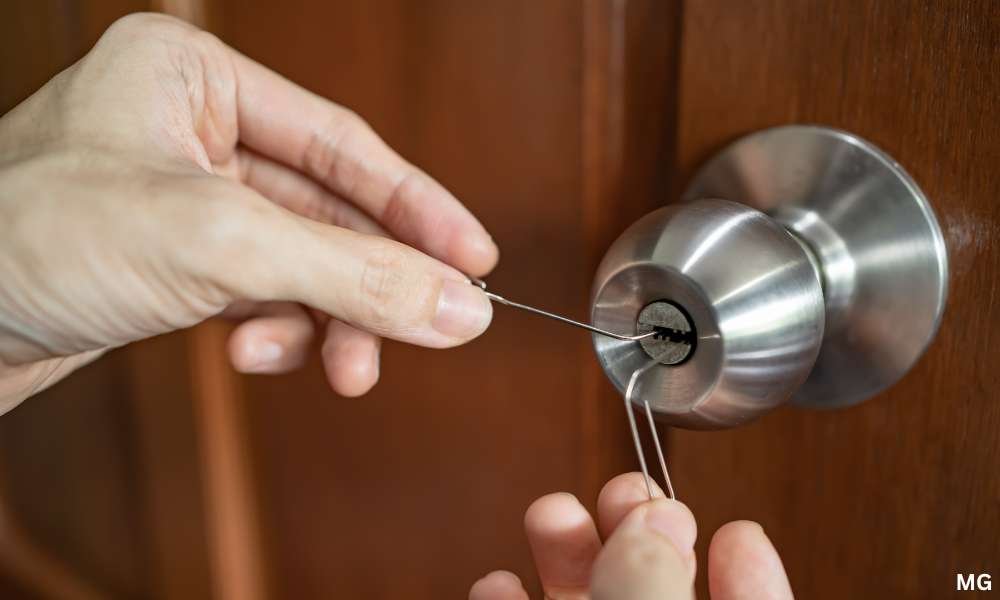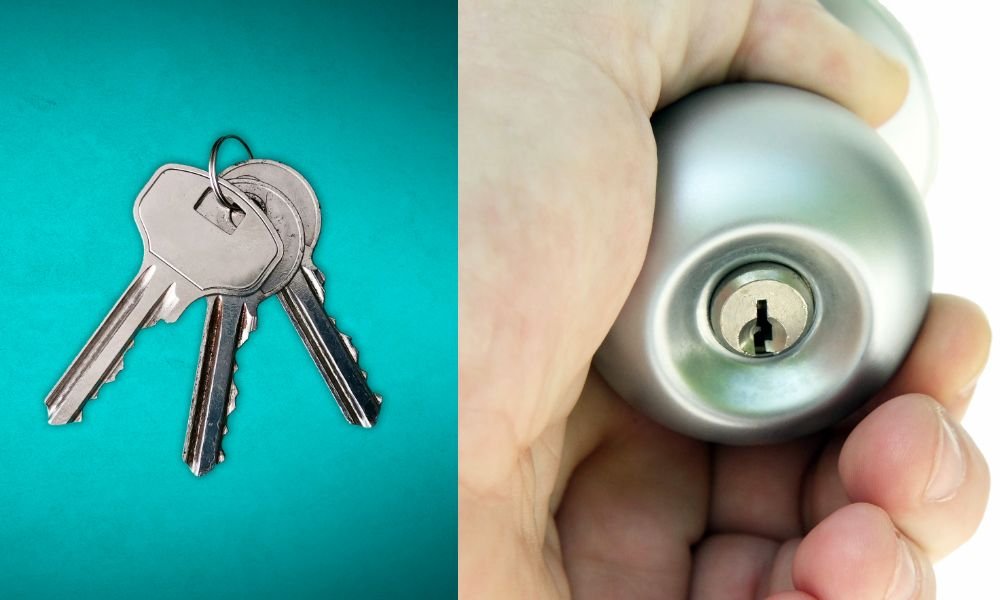Lock picking can be a handy skill in emergencies, such as when you’ve lost your keys. In certain situations, like misplacing or losing your keys, knowing how to unlock a door without the original key can be an extremely useful skill. Professional locksmiths rely on a variety of specialized tools to perform this task, but in emergencies, simple household items can come in handy. One such tool is the humble bobby pin, which can be used to pick simple key locks when you find yourself locked out. This guide will teach you how to pick a key lock with a bobby pin in a step-by-step manner. However, it’s important to note that this technique should only be used on locks that belong to you or with explicit permission from the owner. Improper use of lock-picking techniques is not only unethical but also illegal and should be practiced responsibly. Always respect privacy and property rights when using this skill.
Understanding the Lock Mechanism
Before trying to pick a lock, it’s crucial to understand how the internal mechanism works. Most basic locks, particularly pin tumbler types, contain several pins inside the cylinder. These pins prevent the device from turning unless they’re aligned correctly. When you insert a key, it aligns all the pins, allowing the security device to rotate and unlock. Picking the device using a bobby pin involves mimicking the key’s function by manipulating these pins. The aim is to lift the pins to the right height, enabling the cylinder to turn without the key. Understanding this concept will help you successfully pick a security device using simple tools like a bobby pin.
What You’ll Need to unlock

To successfully pick a lock using a bobby pin, you’ll require two essential tools: a tension wrench and a pick. Both can be easily crafted from bobby pins. The first pin will be used as your pick to manipulate the internal pins of the security device.
To create the tension wrench, bend the second bobby pin into an “L” shape. This will apply the necessary rotational pressure. The other pin should be straightened, with a small bend at the tip, turning it into your pick. This setup will help you push the lock’s pins into position and open it without the key. These simple tools can help in unlocking many basic locks.
Preparing the Bobby Pins
Start by taking the first bobby pin and bending it into an “L” shape. This will serve as your tension wrench. Insert this wrench into the bottom of the keyhole to apply light, consistent pressure. Be sure to maintain a steady grip to avoid slipping during the process.
Next, prepare your pick by slightly bending the tip of the second pin. This will allow you to push up the internal pins inside the security device. Together, these two simple tools will enable you to manipulate the lock’s mechanism. With the tension wrench applying rotational pressure, and the pick lifting the pins, you can unlock the device without needing the original key. This method takes practice, so don’t worry if it doesn’t work perfectly at first.
Applying Tension
Insert the tension wrench into the bottom of the device and apply gentle, steady pressure in the direction you’d turn the key. It’s important to avoid applying too much force, as this could either damage your tools or cause the lock to jam, making it harder to open. Finding the right amount of tension is crucial for success. Adjust your pressure as needed while you work on picking the device. Maintaining a consistent level of tension throughout the process is key to successfully lifting the pins inside the device. Too little or too much force can prevent the device from turning, so aim for a balanced grip as you continue to manipulate the lock.
Picking the Lock
With your tension wrench securely in place, insert the bobby pin pick into the upper section of the lock. Gently push the pick upward to engage the pins inside the lock. Your goal is to lift each pin to its correct height, allowing them to align properly.
As you manipulate the pins, you should feel a slight click when each one sets into its designated position. This feedback is essential to indicate progress. Maintain gentle pressure with the tension wrench while you continue this process. If you don’t hear clicks or feel movement, readjust the position of the pick and try again. Patience is vital, as this process requires careful control and attention to detail to successfully unlock the mechanism.
Fine-Tuning the Process
Once all the pins are correctly set, you should feel the tension wrench begin to rotate, signaling that the lock is about to turn. At this point, the device should open, granting you access. If you don’t succeed on your first attempt, remain calm. Lock-picking takes time, patience, and practice.
Adjust the pressure on the tension wrench as you work through each pin again. If you’re not getting the desired results, don’t hesitate to try a different angle or technique with your pick. With persistence and determination, you will eventually unlock the mechanism. Each attempt enhances your skills, so keep practicing, and you’ll become more proficient at this handy technique over time.
Legal and Ethical Considerations

Lock-picking can be a valuable skill in specific situations, such as emergencies, but understanding legal and ethical boundaries is crucial. Always ensure that you only pick locks you own or have explicit permission to unlock. Engaging in lock picking without consent can lead to serious legal consequences, including potential criminal charges.
Respect for other people’s property and privacy is paramount. Misusing lock-picking skills can undermine trust and may harm relationships. Always approach this skill responsibly, keeping in mind the importance of legality and ethics. By adhering to these principles, you can use your skills positively and appropriately while avoiding any potential legal troubles. Being informed and considerate will ensure that your lock-picking experience remains safe and respectful.
Conclusion
Picking a lock with a bobby pin is achievable when you apply the right technique and practice consistently. This guide has outlined essential steps, from preparing your tools to the actual picking process. Each step is important for successfully unlocking a simple lock without a key.
As you gain experience, remember to use this knowledge responsibly and within legal boundaries. If you ever find yourself locked out of your own property, this DIY solution can be extremely useful. Always approach lock picking with respect for others’ property and privacy. With patience and care, you can develop this skill effectively, ensuring you’re prepared for unexpected situations while adhering to ethical practices.



